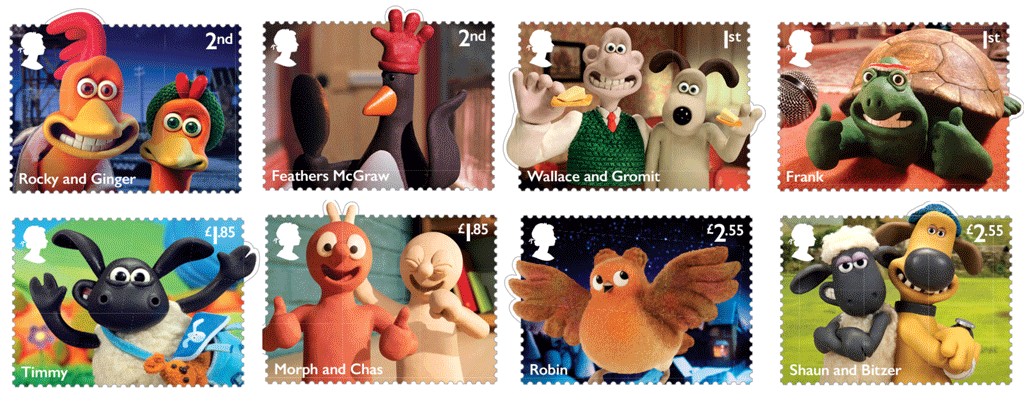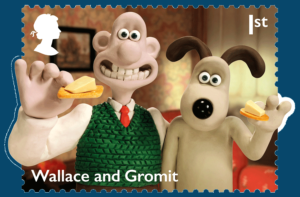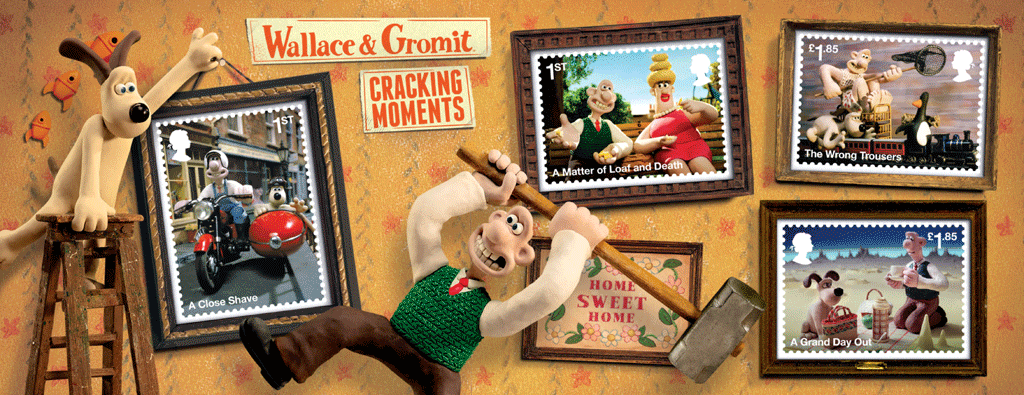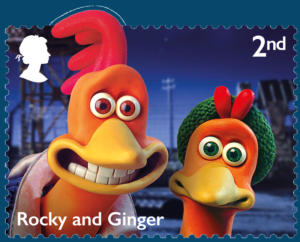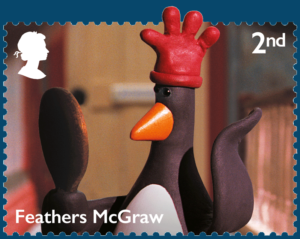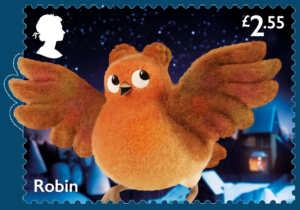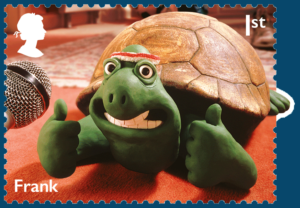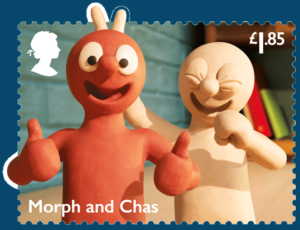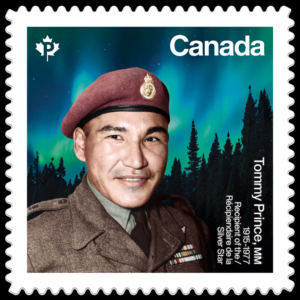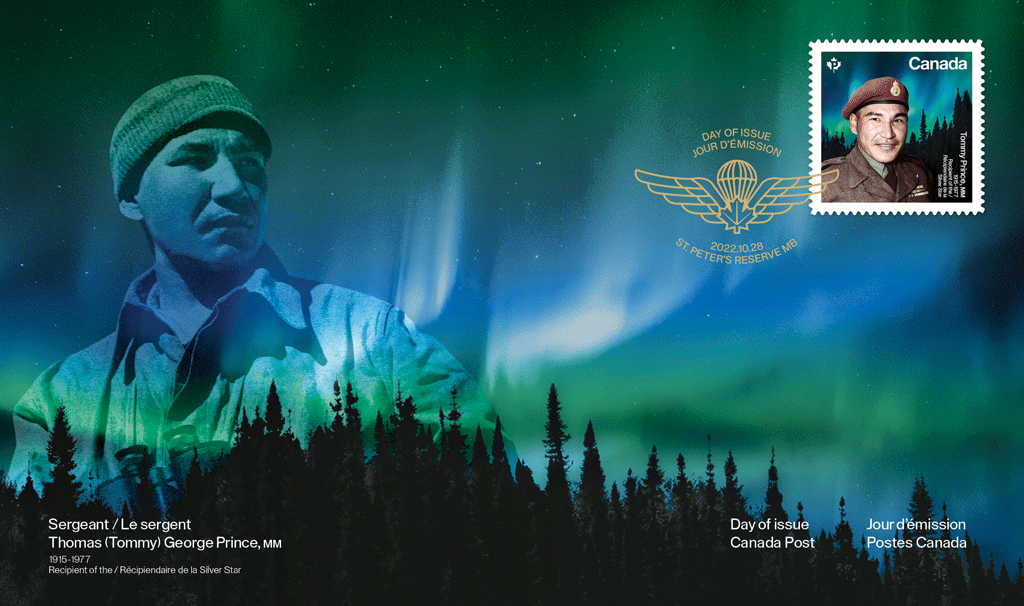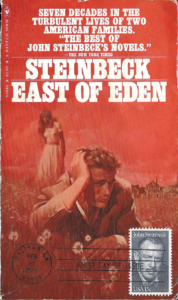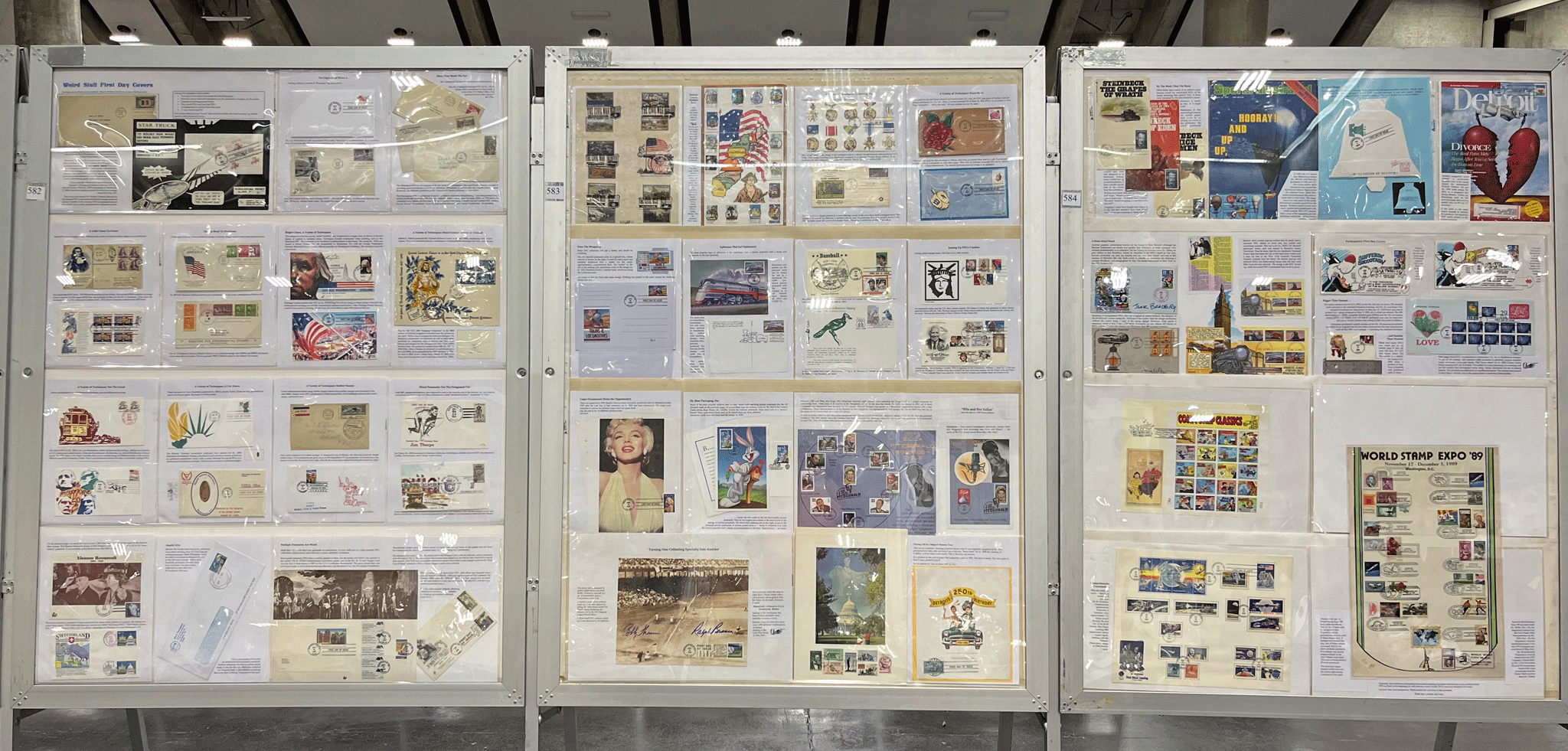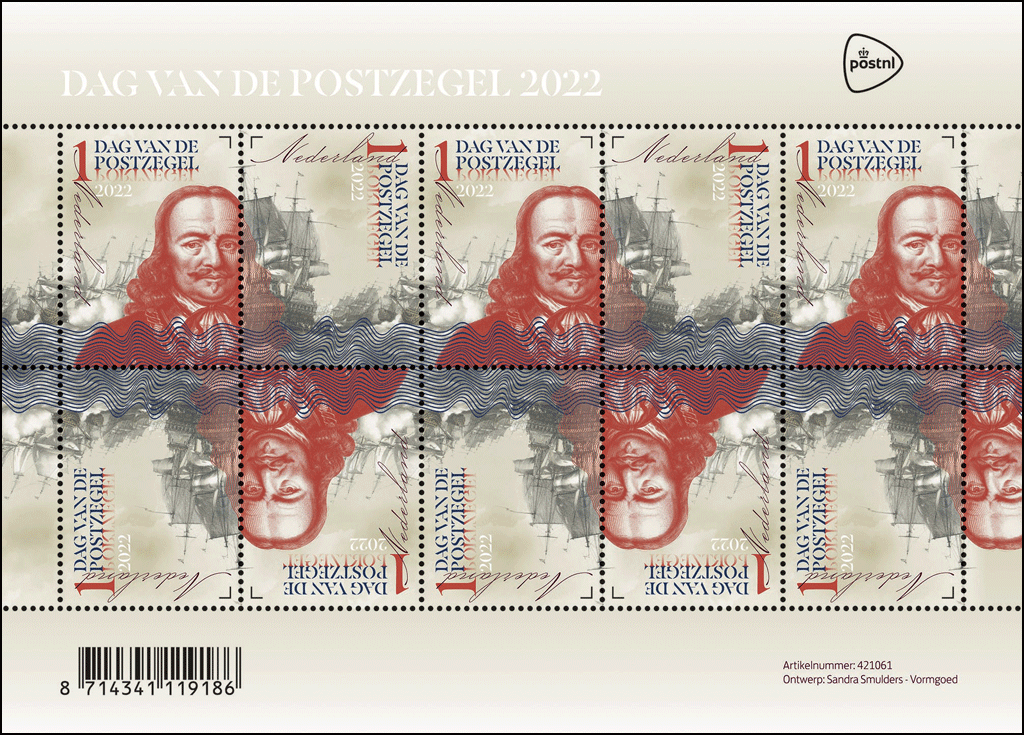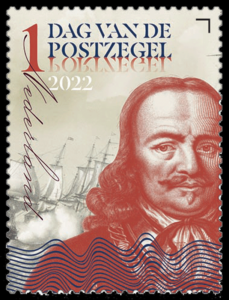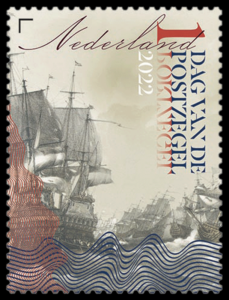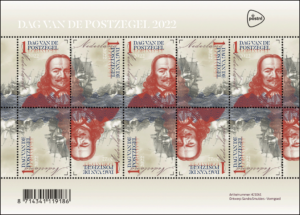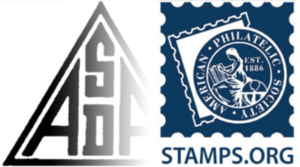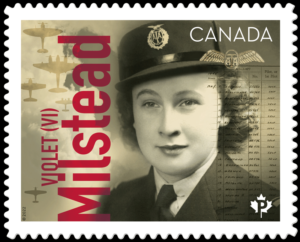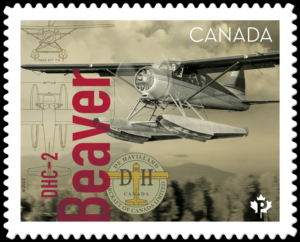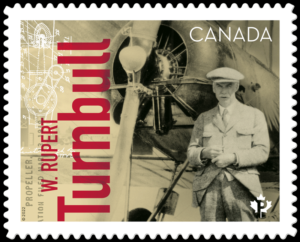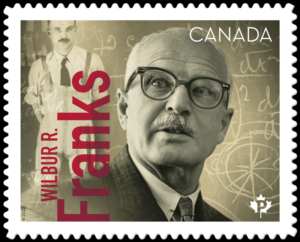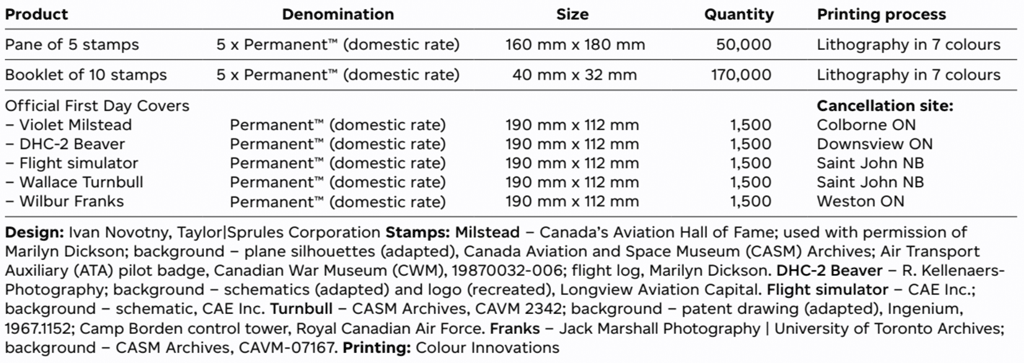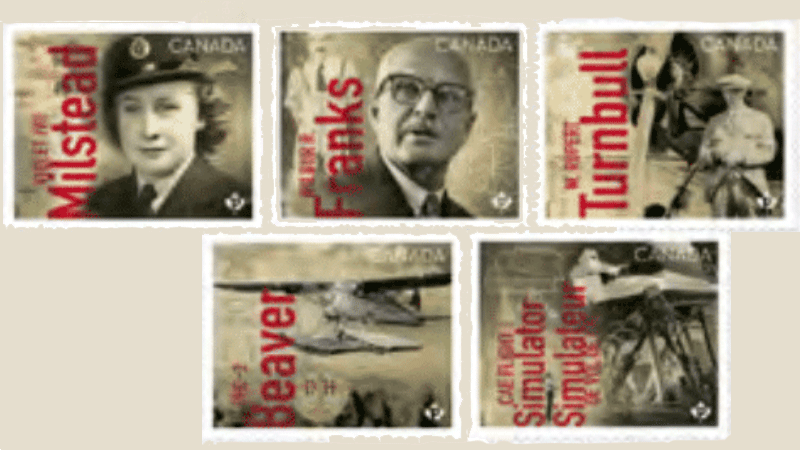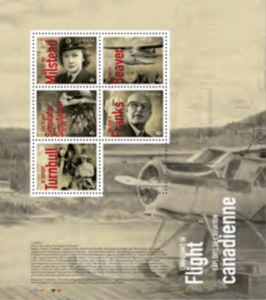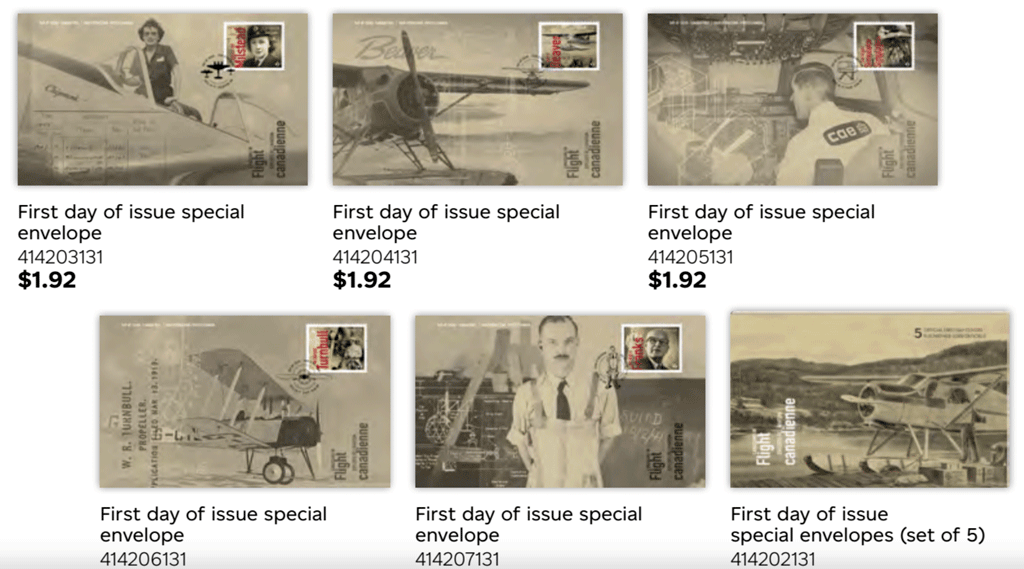[press release] [larger versions of the designs not yet available]
U.S. Postal Service Reveals Stamps for 2023
Ruth Bader Ginsburg, Women’s Soccer and Roy Lichtenstein’s Art Are Featured
Notes: The Roy Liechtenstein section was revised by the USPS a few hours after the initial press release. Quick list of announced issues.
WASHINGTON — The U.S. Postal Service announced today many of the stamps it will issue in 2023.
“The 2023 stamp program features a broad range of subjects and designs. These miniature works of art highlight our unique American culture and offer a broad selection for those looking to collect stamps or send their mail around the nation or the world,” said USPS Stamp Services Director William Gicker.
This is a partial list, with more to be revealed in the weeks and months ahead. All stamp designs are preliminary and subject to change.
Lunar New Year – Year of the Rabbit
 The fourth of 12 stamps in the latest Lunar New Year stamp series celebrates the Year of the Rabbit. Calling to mind the elaborately decorated masks used in the dragon or lion dances often performed in Lunar New Year parades, this three-dimensional mask depicting a rabbit is a contemporary take on the long tradition of paper-cut folk art crafts created during this auspicious time of year. The rabbit mask design incorporates colors and patterns with symbolic meaning. Art director Antonio Alcalá designed the stamp and pane with original art by Camille Chew.
The fourth of 12 stamps in the latest Lunar New Year stamp series celebrates the Year of the Rabbit. Calling to mind the elaborately decorated masks used in the dragon or lion dances often performed in Lunar New Year parades, this three-dimensional mask depicting a rabbit is a contemporary take on the long tradition of paper-cut folk art crafts created during this auspicious time of year. The rabbit mask design incorporates colors and patterns with symbolic meaning. Art director Antonio Alcalá designed the stamp and pane with original art by Camille Chew.
Love – Puppy & Kitten
 Celebrate 50 years since the first Love stamp was issued with two new Love stamps, one featuring a kitten and the other a puppy with their front paws resting atop a big heart. The word “LOVE” is featured in all caps behind each animal. The stamp designs were painted with oils on wood panel, then scanned and edited digitally. Art director Ethel Kessler designed the stamps with original art by Chris Buzelli.
Celebrate 50 years since the first Love stamp was issued with two new Love stamps, one featuring a kitten and the other a puppy with their front paws resting atop a big heart. The word “LOVE” is featured in all caps behind each animal. The stamp designs were painted with oils on wood panel, then scanned and edited digitally. Art director Ethel Kessler designed the stamps with original art by Chris Buzelli.
Great Smoky Mountains (Priority Mail Express)
Home to the most visited national park in the United States, the Great Smoky Mountains 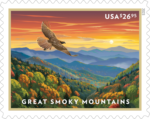 boast extensive national forests and a vast array of native plants and animals. Equally rich in history, folkways and culture, they are an American treasure, which the Postal Service celebrates with this new Priority Mail Express stamp. The stamp art captures an iconic mountain scene located near Newfound Gap between Gatlinburg, TN, and Cherokee, NC. In the foreground, a red-tailed hawk flies over the landscape. Art director Greg Breeding designed the stamp with original art by Dan Cosgrove.
boast extensive national forests and a vast array of native plants and animals. Equally rich in history, folkways and culture, they are an American treasure, which the Postal Service celebrates with this new Priority Mail Express stamp. The stamp art captures an iconic mountain scene located near Newfound Gap between Gatlinburg, TN, and Cherokee, NC. In the foreground, a red-tailed hawk flies over the landscape. Art director Greg Breeding designed the stamp with original art by Dan Cosgrove.
U.S. Flag
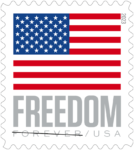 The Postal Service continues its tradition of celebrating the U.S. flag with this stamp, available in panes of 20, booklets of 20, and coils of 100, 3,000 and 10,000. The stamp art bears a straightforward graphic design of OId Glory. Providing a solid foundation for the flag are the word “FREEDOM” in gray and, below it, “FOREVER/USA.” Art director Antonio Alcalá designed the stamp with existing art by Hong Li.
The Postal Service continues its tradition of celebrating the U.S. flag with this stamp, available in panes of 20, booklets of 20, and coils of 100, 3,000 and 10,000. The stamp art bears a straightforward graphic design of OId Glory. Providing a solid foundation for the flag are the word “FREEDOM” in gray and, below it, “FOREVER/USA.” Art director Antonio Alcalá designed the stamp with existing art by Hong Li.
Ernest J. Gaines
 The 46th stamp in the Black Heritage series honors Ernest J. Gaines (1933-2019). Best known for such novels as “The Autobiography of Miss Jane Pittman” and “A Lesson Before Dying,” Gaines drew from his childhood as the son of sharecroppers on a Louisiana plantation to explore the untold stories of rural African Americans, adding a vital voice to American literature. The stamp features an oil painting of Gaines, based on a 2001 photograph. Mike Ryan designed the stamp with art by Robert Peterson. Greg Breeding served as art director.
The 46th stamp in the Black Heritage series honors Ernest J. Gaines (1933-2019). Best known for such novels as “The Autobiography of Miss Jane Pittman” and “A Lesson Before Dying,” Gaines drew from his childhood as the son of sharecroppers on a Louisiana plantation to explore the untold stories of rural African Americans, adding a vital voice to American literature. The stamp features an oil painting of Gaines, based on a 2001 photograph. Mike Ryan designed the stamp with art by Robert Peterson. Greg Breeding served as art director.
$10 Floral Geometry
A new Floral Geometry stamp, denominated at $10, will be available for purchase, 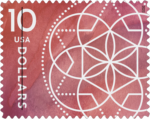 complementing the similarly designed $2 and $5 stamps issued in 2022. The stamps lend an elegant and contemporary appearance to packages, large envelopes and other mailings. The stamp art features a series of overlapping geometric shapes that mimic the symmetry of floral patterns found in nature. The watercolor background and the glimmer of the foil-stamped design and typography create a sophisticated look. The stamp will be issued in panes of four. The stamps were designed and created by the firm Spaeth Hill. Antonio Alcalá was the art director.
complementing the similarly designed $2 and $5 stamps issued in 2022. The stamps lend an elegant and contemporary appearance to packages, large envelopes and other mailings. The stamp art features a series of overlapping geometric shapes that mimic the symmetry of floral patterns found in nature. The watercolor background and the glimmer of the foil-stamped design and typography create a sophisticated look. The stamp will be issued in panes of four. The stamps were designed and created by the firm Spaeth Hill. Antonio Alcalá was the art director.
Piñatas!
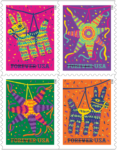 Celebrate the fun and tradition of piñatas with a colorful new booklet of 20 stamps. The stamp art features four lively, digital illustrations of two traditional piñata designs — a donkey and a seven-point star. The bright, saturated color palette was inspired by Mexican culture, including the vibrant colors of small-town houses, traditional hand-sewn dresses, handmade toys and flowers, and classic piñatas themselves. Víctor Meléndez created the original art and designed the stamps. Antonio Alcalá was the art director.
Celebrate the fun and tradition of piñatas with a colorful new booklet of 20 stamps. The stamp art features four lively, digital illustrations of two traditional piñata designs — a donkey and a seven-point star. The bright, saturated color palette was inspired by Mexican culture, including the vibrant colors of small-town houses, traditional hand-sewn dresses, handmade toys and flowers, and classic piñatas themselves. Víctor Meléndez created the original art and designed the stamps. Antonio Alcalá was the art director.
Red Fox
The handsome face of a red fox (Vulpes vulpes) graces this new 40-cent stamp. Sold in 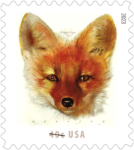 panes of 20 and in self-adhesive coils of 3,000 and 10,000, the stamp is intended for use by bulk mailers for items such as circulars, newsletters and catalogs. It can also be used by customers who enjoy using a variety of stamps on their envelopes and packages. The stamp art features a pencil-and-watercolor illustration from preexisting artwork by wildlife illustrator Dugald Stermer (1936-2011). His penciled calligraphy on the stamp indicates the animal’s common name and its scientific classification. Art director Ethel Kessler designed the stamp.
panes of 20 and in self-adhesive coils of 3,000 and 10,000, the stamp is intended for use by bulk mailers for items such as circulars, newsletters and catalogs. It can also be used by customers who enjoy using a variety of stamps on their envelopes and packages. The stamp art features a pencil-and-watercolor illustration from preexisting artwork by wildlife illustrator Dugald Stermer (1936-2011). His penciled calligraphy on the stamp indicates the animal’s common name and its scientific classification. Art director Ethel Kessler designed the stamp.
 Sailboats
Sailboats
Sailboats stamps celebrate a favorite American outdoor activity with two colorful new postcard stamps. They feature abstract illustrations that capture the joyful sensation of being on the water on a beautiful day. The graphic art was designed and created by artist Libby VanderPloeg, who also created the lettering for the word “postcard,” freehand on a digital tablet. Antonio Alcalá was art director for the project.
Snow Globes
Beloved by children and adults alike, snow globes can be miniature works of art, kitschy 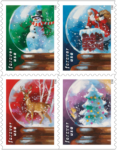 souvenirs or anything in between. Celebrating the spirit of the holidays, the Postal Service captures the playful pleasure of Christmas snow globes on four new stamps.
souvenirs or anything in between. Celebrating the spirit of the holidays, the Postal Service captures the playful pleasure of Christmas snow globes on four new stamps.
Painting in oil, the artist created spherical snow globes featuring icons of the season: a snowman wearing a jaunty red-and-white scarf; Santa Claus on a rooftop preparing to climb down the chimney; a reindeer standing in a snowy forest; and a snowy tree decorated with colorful ornaments. Art director Derry Noyes designed the stamps with original art by Gregory Manchess.
Thinking of You
Capturing the excitement and delight of receiving a card in the mail meant just for you, 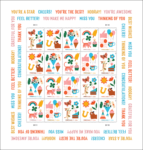 Thinking of You features five stamps in a pane of 20 and a host of die-cut, self-adhesive messages — perfect to accompany letters or cards sent to brighten someone’s day. Each stamp is designed in fun colors with different whimsical images, including flowers, balloons, cute animals, sweet treats and symbols of good luck. Words of encouragement and thoughtful affirmations surround the stamps on the pane. Art director Greg Breeding designed the stamps with original artwork by Ellen Surrey.
Thinking of You features five stamps in a pane of 20 and a host of die-cut, self-adhesive messages — perfect to accompany letters or cards sent to brighten someone’s day. Each stamp is designed in fun colors with different whimsical images, including flowers, balloons, cute animals, sweet treats and symbols of good luck. Words of encouragement and thoughtful affirmations surround the stamps on the pane. Art director Greg Breeding designed the stamps with original artwork by Ellen Surrey.
Tulip Blossoms
Close-up photographs of 10 beautiful tulips in a rainbow of colors grace this new booklet  of 20 stamps. One blossom fills almost the entire frame of each stamp, with just the top of a stem peeking out from underneath. Since Dutch immigrants brought tulip bulbs to North America hundreds of years ago, the flower has become a dazzling part of our landscape. Art director Greg Breeding designed the stamps with existing photographs by Denise Ippolito.
of 20 stamps. One blossom fills almost the entire frame of each stamp, with just the top of a stem peeking out from underneath. Since Dutch immigrants brought tulip bulbs to North America hundreds of years ago, the flower has become a dazzling part of our landscape. Art director Greg Breeding designed the stamps with existing photographs by Denise Ippolito.
Winter Woodland Animals
 Connect to the natural beauty of the winter season and celebrate four species that make their homes in the woodlands of North America. Among the most familiar of wildlife, deer, rabbits, owls and foxes are found across much of the American landscape. This booklet of 20 stamps features graphic illustrations of these four animals in different woodland settings in winter. Art director Antonio Alcalá designed the stamps with Katie Kirk, who illustrated the stamps.
Connect to the natural beauty of the winter season and celebrate four species that make their homes in the woodlands of North America. Among the most familiar of wildlife, deer, rabbits, owls and foxes are found across much of the American landscape. This booklet of 20 stamps features graphic illustrations of these four animals in different woodland settings in winter. Art director Antonio Alcalá designed the stamps with Katie Kirk, who illustrated the stamps.
Chief Standing Bear
 This stamp issuance honors Chief Standing Bear (ca. 1829-1908), who won a landmark court ruling in 1879 that determined that Native Americans were persons under the law with inherent rights to life, liberty and the pursuit of happiness. The stamp features a portrait of Chief Standing Bear by Thomas Blackshear II, based on a black-and-white photograph taken in 1877. The color of Standing Bear’s attire was based mainly on contemporary descriptions. Art director Derry Noyes designed the stamp.
This stamp issuance honors Chief Standing Bear (ca. 1829-1908), who won a landmark court ruling in 1879 that determined that Native Americans were persons under the law with inherent rights to life, liberty and the pursuit of happiness. The stamp features a portrait of Chief Standing Bear by Thomas Blackshear II, based on a black-and-white photograph taken in 1877. The color of Standing Bear’s attire was based mainly on contemporary descriptions. Art director Derry Noyes designed the stamp.
Endangered Species
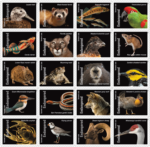 Under the Endangered Species Act, which marks its 50th anniversary in 2023, more than 1,300 imperiled plant and animal species are safeguarded to increase their chances of survival. With this pane of 20 stamps, the Postal Service presents a photographic portfolio of 20 representative endangered animal species. Those featured are found within the 50 states and U.S. territories and possessions or living near U.S. borders. The images are among more than 13,000 in photographer Joel Sartore’s “Photo Ark,” his project to document as many animal species as possible. Art director Derry Noyes designed the stamps with Sartore’s existing photographs.
Under the Endangered Species Act, which marks its 50th anniversary in 2023, more than 1,300 imperiled plant and animal species are safeguarded to increase their chances of survival. With this pane of 20 stamps, the Postal Service presents a photographic portfolio of 20 representative endangered animal species. Those featured are found within the 50 states and U.S. territories and possessions or living near U.S. borders. The images are among more than 13,000 in photographer Joel Sartore’s “Photo Ark,” his project to document as many animal species as possible. Art director Derry Noyes designed the stamps with Sartore’s existing photographs.
Railroad Stations
Noteworthy railroad stations began brightening the American landscape by the 1870s and,  although many were torn down once they had outlived their original purpose, hundreds survived. This issuance of 20 stamps features five architectural gems that continue to play important roles in their communities: Tamaqua Station in Pennsylvania; Point of Rocks Station in Maryland; Main Street Station in Richmond, VA; Santa Fe Station in San Bernardino, CA; and Union Terminal in Cincinnati, OH. Passenger trains stop at all of them except Tamaqua. Derry Noyes served as art director. Down the Street Designs created the digital illustrations and typography.
although many were torn down once they had outlived their original purpose, hundreds survived. This issuance of 20 stamps features five architectural gems that continue to play important roles in their communities: Tamaqua Station in Pennsylvania; Point of Rocks Station in Maryland; Main Street Station in Richmond, VA; Santa Fe Station in San Bernardino, CA; and Union Terminal in Cincinnati, OH. Passenger trains stop at all of them except Tamaqua. Derry Noyes served as art director. Down the Street Designs created the digital illustrations and typography.
Ruth Bader Ginsburg
This stamp honors Justice Ruth Bader Ginsburg (1933-2020), the 107th Supreme Court  Justice of the United States. After beginning her career as an activist lawyer fighting gender discrimination, Justice Ginsburg became a respected jurist whose important majority opinions advancing equality and strong dissents on socially controversial rulings made her a passionate proponent of equal justice and an icon of American culture. The stamp features an oil painting of Justice Ginsburg facing the viewer in her black judicial robe with an intricate white collar. Art director Ethel Kessler designed the stamp with art by Michael J. Deas, based on a photograph by Philip Bermingham.
Justice of the United States. After beginning her career as an activist lawyer fighting gender discrimination, Justice Ginsburg became a respected jurist whose important majority opinions advancing equality and strong dissents on socially controversial rulings made her a passionate proponent of equal justice and an icon of American culture. The stamp features an oil painting of Justice Ginsburg facing the viewer in her black judicial robe with an intricate white collar. Art director Ethel Kessler designed the stamp with art by Michael J. Deas, based on a photograph by Philip Bermingham.
Toni Morrison
Author Toni Morrison (1931-2019) is honored in this stamp issuance. Her artfully crafted  novels explored the diverse voices and multifaceted experiences of African Americans. Known for such books as “The Bluest Eye,” “Song of Solomon” and “Beloved,” Morrison was the rare author who achieved both bestseller status and critical success. In 1993, she made history as the first African American woman to win the Nobel Prize for Literature. The stamp features a photograph of Morrison taken in 2000. Art director Ethel Kessler designed the stamp with photography by Deborah Feingold.
novels explored the diverse voices and multifaceted experiences of African Americans. Known for such books as “The Bluest Eye,” “Song of Solomon” and “Beloved,” Morrison was the rare author who achieved both bestseller status and critical success. In 1993, she made history as the first African American woman to win the Nobel Prize for Literature. The stamp features a photograph of Morrison taken in 2000. Art director Ethel Kessler designed the stamp with photography by Deborah Feingold.
Roy Lichtenstein
The work of the iconic American artist of the pop art movement, Roy Lichtenstein (1923-1997) is celebrated with a stamp issuance in his honor. Each of the five stamps in  this pane of 20 features one work of art by Lichtenstein: “Standing Explosion (Red)” (porcelain enamel on steel, 1965); “Modern Painting I” (acrylic, oil, graphite pencil on canvas, 1966); “Still Life with Crystal Bowl” (acrylic, oil, graphite pencil on canvas, 1972); “Still Life with Goldfish” (acrylic, oil, graphite pencil on canvas, 1972); and “Portrait of a Woman” (acrylic, oil, graphite pencil on canvas, 1979). The selvage features a photograph of Lichtenstein by Bob Adelman with the artist’s face framed by a model of his 1983 sculpture Brushstrokes in Flight. Derry Noyes served as art director and designer for this issuance.
this pane of 20 features one work of art by Lichtenstein: “Standing Explosion (Red)” (porcelain enamel on steel, 1965); “Modern Painting I” (acrylic, oil, graphite pencil on canvas, 1966); “Still Life with Crystal Bowl” (acrylic, oil, graphite pencil on canvas, 1972); “Still Life with Goldfish” (acrylic, oil, graphite pencil on canvas, 1972); and “Portrait of a Woman” (acrylic, oil, graphite pencil on canvas, 1979). The selvage features a photograph of Lichtenstein by Bob Adelman with the artist’s face framed by a model of his 1983 sculpture Brushstrokes in Flight. Derry Noyes served as art director and designer for this issuance.
Waterfalls
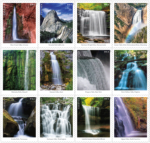 Among nature’s most beautiful wonders, waterfalls come in all shapes and sizes, from serene cascades to mighty cataracts. The Postal Service celebrates the variety and beauty of American waterfalls with 12 new stamps. Each stamp features a photograph with the name of the waterfall and state in which it is located. Art director Greg Breeding designed the stamps and pane with existing photographs.
Among nature’s most beautiful wonders, waterfalls come in all shapes and sizes, from serene cascades to mighty cataracts. The Postal Service celebrates the variety and beauty of American waterfalls with 12 new stamps. Each stamp features a photograph with the name of the waterfall and state in which it is located. Art director Greg Breeding designed the stamps and pane with existing photographs.
Women’s Soccer
This stamp issuance celebrates women’s soccer in the United States. From youth leagues to the elite world champion U.S. national team, millions of girls and women throughout the  country participate in this fast-paced, competitive sport. The graphic stamp artwork depicts a female soccer player in action, walloping a ball with a side volley. Conjuring the aesthetic of mid-century print design, the illustrator used simplified shapes and bold colors to convey the high energy and fast motion of the sport. The somewhat grainy rendering lends a timeless quality to the design, evoking not just a single all-star athlete or era but the entire legacy of women’s soccer. Art director Antonio Alcalá designed the stamp with an original illustration by Noah MacMillan (1988-2022).
country participate in this fast-paced, competitive sport. The graphic stamp artwork depicts a female soccer player in action, walloping a ball with a side volley. Conjuring the aesthetic of mid-century print design, the illustrator used simplified shapes and bold colors to convey the high energy and fast motion of the sport. The somewhat grainy rendering lends a timeless quality to the design, evoking not just a single all-star athlete or era but the entire legacy of women’s soccer. Art director Antonio Alcalá designed the stamp with an original illustration by Noah MacMillan (1988-2022).
School Bus
School Bus will be a new additional-ounce stamp, available in panes of 20 and coils of 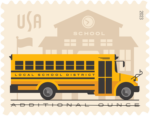 100. The issuance celebrates the iconic yellow school bus and its role in ensuring that millions of children get to school and home again every day. The stamp features a stylized illustration of a 21st century yellow school bus, in profile in front of a silhouetted schoolhouse that is more evocative of an earlier era. Artist Steve Wolf worked with art director Greg Breeding and stamp designer Mike Ryan.
100. The issuance celebrates the iconic yellow school bus and its role in ensuring that millions of children get to school and home again every day. The stamp features a stylized illustration of a 21st century yellow school bus, in profile in front of a silhouetted schoolhouse that is more evocative of an earlier era. Artist Steve Wolf worked with art director Greg Breeding and stamp designer Mike Ryan.
Patriotic Block
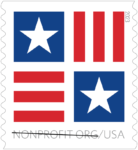 Patriotic Block will be a new nondenominated, nonprofit-price stamp intended for bulk mailings by authorized nonprofit organizations and will be sold in self-adhesive coils of 3,000 and 10,000. This stamp displays the components of the American flag — the stars and stripes — arranged in a four-quadrant block on a white background. Carol Beehler designed the stamp with art direction by Antonio Alcalá.
Patriotic Block will be a new nondenominated, nonprofit-price stamp intended for bulk mailings by authorized nonprofit organizations and will be sold in self-adhesive coils of 3,000 and 10,000. This stamp displays the components of the American flag — the stars and stripes — arranged in a four-quadrant block on a white background. Carol Beehler designed the stamp with art direction by Antonio Alcalá.






















